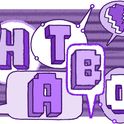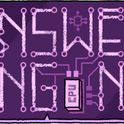Jason Allen won this year’s prize in digital arts at the Colorado State Fair with an image titled Théâtre D’opéra Spatial. The image depicts a stage populated by figures in flowing velvet robes, illuminated by a massive circular porthole, looking out onto a mountain range.
Allen’s work looks like the product of many careful hours manipulating digital photos in a program like Photoshop. Instead, the image was created using Midjourney, an AI system that turns text prompts—“a dark theatre stage lit by a circular portal” say, or whatever Allen typed in—into original digital images. Allen was transparent about his process, submitting his work as “Jason M Allen via Midjourney”. The Colorado State Fair judges stated that his piece was permitted within the rules of the category he entered.
Still, there’s been a predictable backlash to Allen’s work from critics who worry both that digitally generated art will outcompete the work of human artists, and that human artists are being exploited by AI image-generation systems. Programs like Midjourney—other systems include Dall-E and Stable Diffusion—generate new images using algorithms trained on millions of photographs, paintings and digital images, all of which were produced by humans.
Allen is leaning into this controversy, telling the New York Times: “Art is dead, dude. It’s over. AI won. Humans lost.” AI has “conquered” other fields of human endeavour before. In 1996, an IBM supercomputer named Deep Blue played chess champion Garry Kasparov and lost, four matches to two. Upgraded and reprogrammed, Deep Blue won the rematch a year later, leading Kasparov to complain that IBM had cheated.
Deep Blue’s victory led to countless conversations about whether artificial intelligence was finally challenging human capabilities. Most computer scientists urged caution: winning at chess is an example of domain-specific intelligence, not general intelligence. A computer as powerful as Deep Blue could simulate billions of possible games and choose moves that led to the best outcome. Our phones are now so powerful that the mobile version of Stockfish, an open-source chess program, would beat Deep Blue easily, as well as any human grandmaster.
But despite the ability to play chess at a superhuman level, computer algorithms still struggle with tasks that humans do routinely, such as driving in city traffic. Notwithstanding enthusiastic promises made by tech leaders like Elon Musk, who predicted that a self-driving Tesla would navigate across the United States in 2017, AI often struggles in complex, real-world situations, where algorithms can fail in unanticipated ways.
Princeton computer scientists Sayash Kapoor and Arvind Narayanan suggest AI celebrants are overconfident in the power of their systems. In their new book on “AI snake oil”, they note success in one field of intelligence does not necessarily translate well to another—solving problems of perception, where computer vision systems have made great strides, does not mean you can solve problems of prediction, where AI still has great difficulties. As encouraged by entrepreneurs like Mark Zuckerberg, Kapoor and Narayanan suggest that AI developers are often moving fast and breaking things. “But this approach is a poor fit for healthcare or self-driving cars where a single failure can be catastrophic. The last 10 per cent is 90 per cent of the effort.”
Yet even Kapoor and Narayanan acknowledge that “deep learning” approaches to artificial intelligence have made vast strides in areas much less constrained than playing chess—new algorithms are extremely successful at recognising objects in complex scenes, transcribing speech and, now, creating novel images from text prompts. As social media fills with computer-generated art experiments—Mona Lisa riding a motorcycle! A herd of giraffes in the style of Van Gogh!—it’s hard not to feel like something ineffably human is being challenged.
Will Midjourney and other programs begin to fill modern art galleries with works prompted, but not executed, by humans? Will illustrators—like those who illustrate this magazine—become obsolete? I’ve been weighing these questions ever since talking with my friend Mike Sugarman, an expert in this field. I think it’s possible that AI will achieve these things, but it’s just as likely that something more complex and interesting will emerge from the interaction between humans and these new tools.
Consider the drum machine. The Wurlitzer Sideman, invented in 1959, was so threatening to professional drummers that the American Association of Musicians sought to have it banned. But when drum machines became small, digital and affordable, with the Roland TR-808 in 1980, they changed the sound of popular music.
While drum machines are now very good, you’re unlikely to find one on stage at a rock or jazz concert. Great living drummers—Ahmir “Questlove” Thompson, Dave Grohl—will still draw in fans. But hip hop, in particular, has seen a revolution. In one of this year’s best books, Dilla Time, journalist Dan Charnas documents the contributions of producer James Dewitt Yancey, better known as J Dilla, a savant of the Akai MPC drum machine. Before his untimely death at 32 after battling lupus, Dilla created a wealth of beats that challenged perceptions of what drumming can do. These are deeply unpredictable, with the bass drum and snare falling at unusual intervals, hard for human drummers to replicate. Dilla tapped his beats into his Akai, then nudged the sounds, microseconds at a time, into configurations not even he could play manually. The resulting off-kilter, drunk-sounding rhythms have been so influential that Charnas argues for a third rhythmic feel, beyond the “straight time” of classical music and drum machines and the “swing time” of jazz and blues: “Dilla time”, a rhythm only possible at the meeting of human and machine.
Composer Holly Herndon, who has a doctorate from Stanford in computer music, has released a tool called Holly+ which allows performers to sing in her voice. Herndon showcased the tool at the 2022 TED conference by inviting musician and singer Pher to perform a duet with… himself. With one mic, Pher’s deep baritone anchored the song, while the second mic transformed Pher’s voice into Holly+’s mezzo-soprano, an octave higher—Herndon herself stood silent on stage.
As Herndon points out, the existence of high-quality AI tools for musicians raises issues of intellectual property. Could someone go on tour as Herndon with Holly+, without her permission? She and her husband, digital artist Mat Dryhurst, have released a tool with the Spawning AI collaborative venture called Have I Been Trained, which allows visual artists to see if their work has been used in databases that train systems like Midjourney. Their goal is to create AI tools that augment human creativity, but to allow artists to opt in or out of having their creations used as raw material for AI systems.
As artificial intelligence leaps forward, so do humans. Jason Allen is trolling us by declaring art is dead. Instead, a new way of making art, at the intersection of AI and human skill, is being born.













